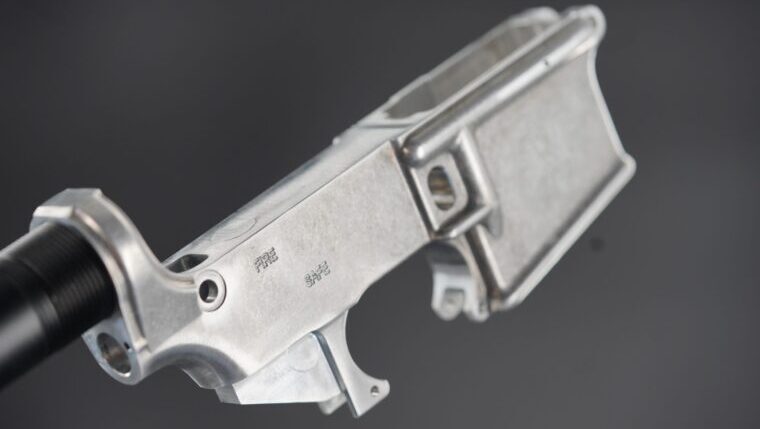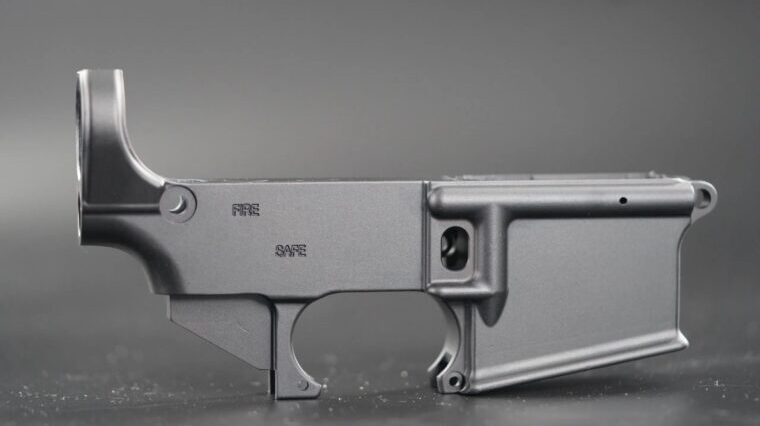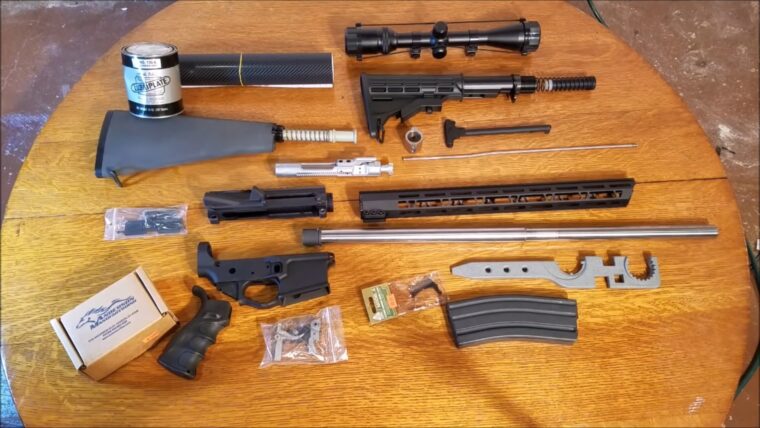Gone are the days when DIY enthusiasts were limited to building bookshelves and renovating their kitchens. Today’s DIY culture, combined with a resurgent interest in personal firearm assembly, has led to the popularity of the 80% lower receiver.
For the uninitiated, an 80% lower receiver is essentially an incomplete firearm component that requires additional machining to become functional. But why would anyone opt for something that’s only 80% finished?
The appeal lies in the challenge, the learning experience, and often, the legal framework surrounding it. This article will guide you through the art of assembling and using 80% lower receivers with precision and safety in mind.
Understanding the Basics: What is an 80% Lower Receiver?
An 80% lower receiver refers to the lower component of a firearm that is roughly 80% complete which you can browse stock for. It lacks some essential elements, making it non-functional and thereby not considered a “firearm” in the legal sense in many jurisdictions.
As a result, it can be sold without the need for a Federal Firearms License (FFL) or background check. Once the buyer completes the additional machining, the 80% lower becomes a functional firearm component, and therefore it transforms into a full-fledged firearm from a legal perspective.
Selecting the Right Materials and Tools
Before diving into the assembly process, it’s crucial to invest in quality tools and materials. Your choice will influence the accuracy, functionality, and safety of your firearm. Here’s what to consider:
Material Choice: The most common materials for 80% lowers are aluminum and polymer. Aluminum is preferred for its durability and resistance to wear. Polymer, on the other hand, is lighter and more affordable but may not offer the same level of strength.
Essential Tools: The tools required will vary based on the design of your 80% lower. However, some standard tools include:
- A milling machine or a drill press: For removing material and shaping the lower.
- End mills and drill bits: For precise cutting.
- Files and sandpaper: For finishing and smoothing edges.
The Machining Process
With your 80% lower and tools on hand, you’re ready to start machining. Although the exact steps will depend on the design and material of your lower, here’s a general overview:
Secure Your Workspace: Ensure that your workspace is clutter-free, and all tools are within reach. Ensure you’re working in a well-lit environment.
Setup: Secure the 80% lower in a vice or jig, ensuring it’s stable. The jig will guide your tools, ensuring accuracy.
Drilling: Start by drilling out the trigger hole, hammer pin hole, and selector hole. Your jig will guide you on where and how deep to drill.
Milling the Fire Control Pocket: This is where your end mill comes in. The fire control pocket houses the components that allow your firearm to function, such as the trigger and hammer.
Finishing Touches: Once you’ve completed the drilling and milling, use files and sandpaper to smoothen any rough edges. Ensure all surfaces are smooth and that all drilled areas are clean and free from debris.
Safety First

When dealing with firearms, safety can’t be emphasized enough. Here are some safety tips specific to assembling 80% lowers:
Always Assume It’s Loaded: Once your 80% lower is complete, always treat it as if it’s loaded. This means never pointing it at anything you’re not prepared to destroy.
Wear Protective Gear: During the machining process, wear safety goggles, ear protection, and a dust mask. Metal or polymer shavings can be hazardous.
Check and Double-check: Once your firearm is assembled, double-check all components to ensure they’re correctly installed. Misalignments or loose parts can come with dangerous when the firearm is fired.
The Legal Landscape
Before purchasing or assembling an 80% lower receiver, it’s essential to familiarize yourself with the laws in your country or state. In the United States, for instance, federal law doesn’t consider an 80% lower a firearm until it’s completed. However, state laws vary, and some states have additional restrictions or requirements.
Moreover, once the 80% lower is fully machined, it’s considered a firearm, and all applicable laws then apply. This might include registration, serialization, or other legal processes. Always consult with legal counsel or local law enforcement to ensure you’re compliant.
Adding Personal Touches and Customizations

The ability to truly make an 80% lower firearm your own is a significant attraction. Beyond the primary draw of DIY assembly and navigating the legal landscape, the customization potential is vast.
With a commercial firearm, you’re typically locked into the manufacturer’s design. With an 80% lower, you’re both the builder and the designer, offering a blank canvas to work with.
Engraving and markings are a fantastic place to start. Once you have completed your 80% lower, think about personal touches like engravings or specific markings. Maybe there’s a personal emblem that resonates with you, or perhaps a favorite quote. Keep in mind, however, to ensure that any engraving does not weaken or structurally compromise the lower.
Considering the finish of your firearm opens up another realm of customization. There’s the option of Cerakote, a ceramic-based finish renowned for its durability against wear and corrosion.
It also comes in a plethora of colors, allowing for individualized designs. For those working with aluminum lowers, anodizing is a robust option, creating a durable, corrosion-resistant finish. With your lower receiver now complete, don’t forget to explore the plethora of upgraded components that can further enhance both functionality and aesthetics.
Whether it’s custom triggers, enhanced safety selectors, or ergonomic grips, the choices are abundant.
Maintaining Your DIY Firearm

Completing your 80% lower and integrating it into a firearm is a milestone, but the journey doesn’t end there. Regular maintenance is pivotal, ensuring the safety, optimum functionality, and longevity of your creation. The importance of regular cleaning cannot be overstated.
Like all firearms, your DIY project will amass dirt, residues from gunpowder, and in unfavorable conditions, even rust. It’s crucial to periodically disassemble and clean, especially post firing sessions.
Regular wear and tear is a natural occurrence, but staying on top of it is essential. By conducting routine inspections, you can preemptively identify and rectify potential issues, ensuring they don’t escalate into significant problems.
Safe storage is also of paramount importance. It’s always advisable to keep your firearm in a dry, safe place, out of the reach of children or any unauthorized users. Investing in a top-notch gun safe, if possible, can be invaluable.
Joining a Community
Venturing into the world of 80% lowers doesn’t mean treading the path alone. A rewarding aspect is the expansive community that you can become an integral part of.
There’s no shortage of dedicated online forums, vibrant social media groups, and local clubs teeming with firearm DIY enthusiasts. Engaging with these communities can come with a treasure trove of benefits.
From gleaning technical insights and guidance from seasoned members to staying abreast of the latest in tools, techniques, and best practices, the learning never stops.
Additionally, these platforms offer the perfect stage to showcase your creations, gather feedback, and most importantly, stay updated on ever-evolving laws and regulations.
Final Thoughts: The Appeal of DIY Firearms
The journey of transforming an 80% lower receiver into a functional firearm component is about more than just crafting a tool.
It’s about the thrill of creation, understanding the mechanics of firearms, and achieving a sense of accomplishment. Like any DIY project, it offers hands-on learning and a tangible result of your hard work.
However, as with all firearm-related endeavors, safety, precision, and legal awareness should be your guiding principles. Whether you’re a seasoned gunsmith or a novice DIY enthusiast, take the time to research, plan, and execute with care.
The world of 80% lowers is vast and inviting, but it demands respect and meticulousness in return. Now that you’ve learned about lower receivers, check out our article on optimizing AR-15 with upper receivers and maximizing your shooting precision. Happy building!
